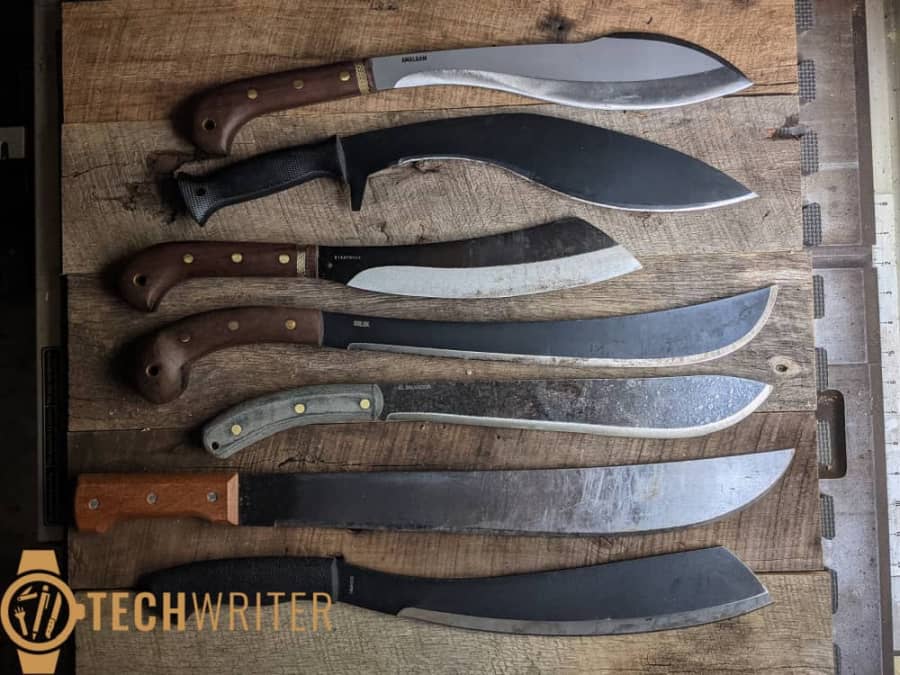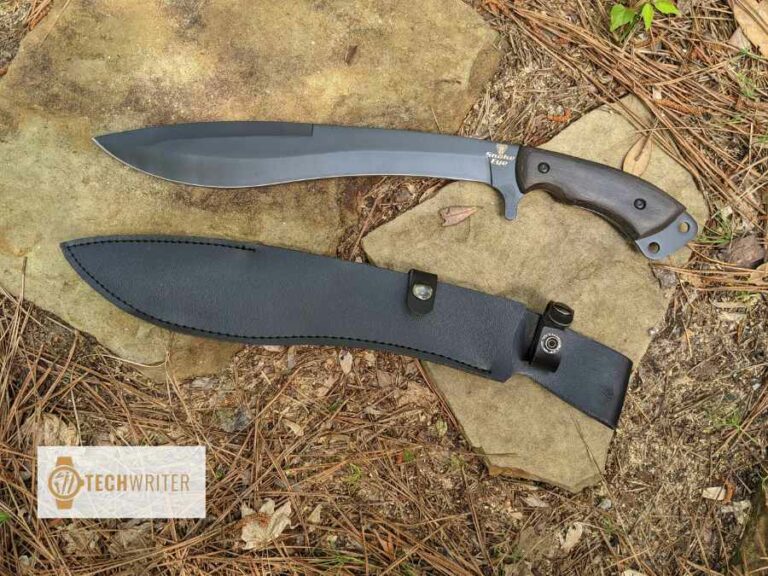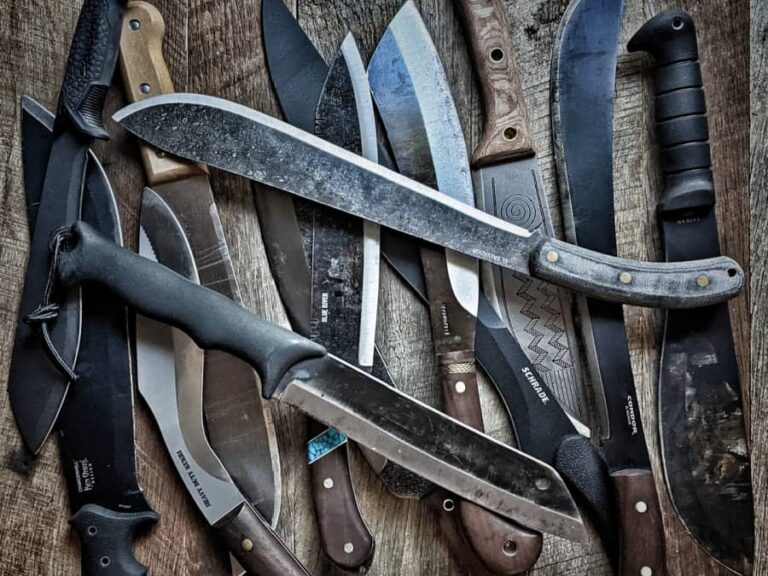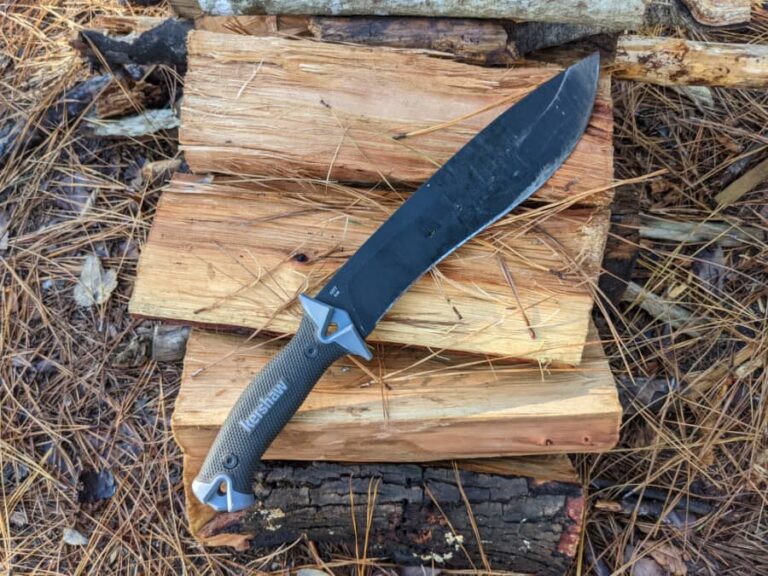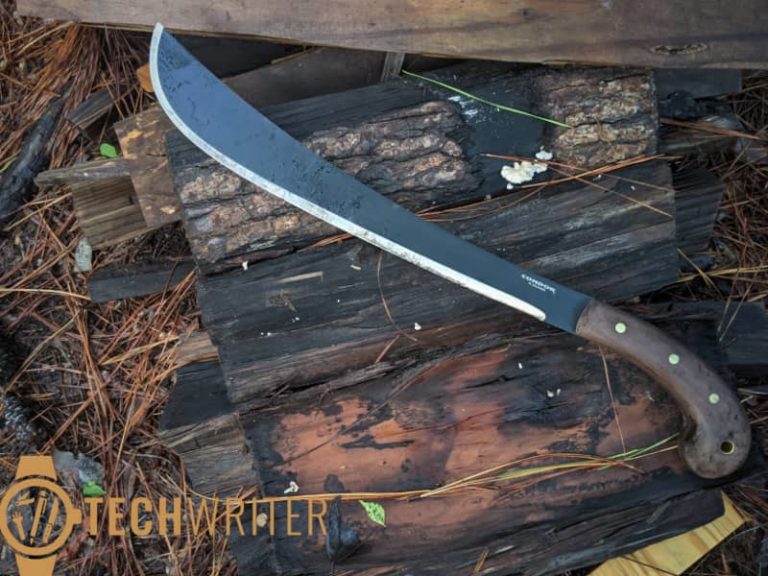What Are The Different Types of Machetes
Machetes – everyone has seen them in movies and likely has one stashed away somewhere in their home, just in case. But what are machetes, and what are they used for? Who needs one and when?
A machete is a sizable, cleaver-like, chopping instrument commonly used for agricultural activities like cutting sugar cane and/or hacking or cutting through soft undergrowth in forests.
It’s a highly versatile tool since the blade is suitable for cutting. The weighted upper edge provides power for chopping. You may use your machete to chop, cut, slash, scrape, carve, and whittle almost anything you put in front of it. You can use it to butcher fish as well as game. The machete is also a dangerous makeshift weapon.
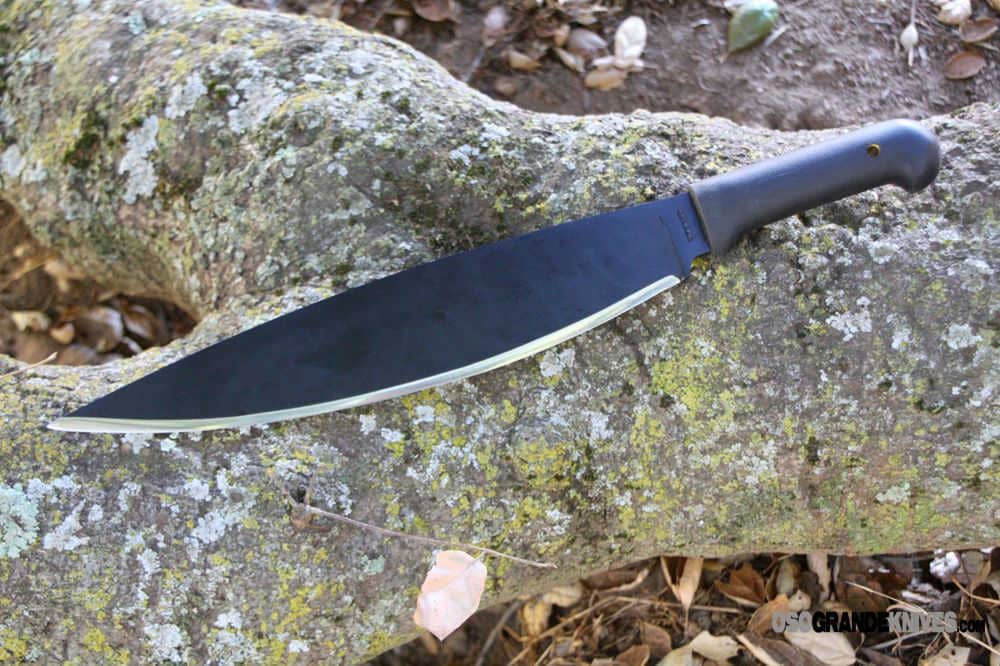
Barong Machete
The Barong machete is a large, heavy-duty machete from the Philippines. It has a wide, leaf-shaped, curved blade that tapers to a sharp point at the pussak. The curved blade has a deeper curve on one side than the other, with the Dulag or back edge of the blade having a lesser curve than the curved blade. The blade’s pommel is curved at the end. The weapons are generally around 22 inches long and have a blade measuring between 16 and 24 inches in length.
The Barong (also known as barung or rawit) is ideally suited for self-defense with its thick, durable blade. It is also used in martial arts in various parts of the Philippines, including Kali and Silat.
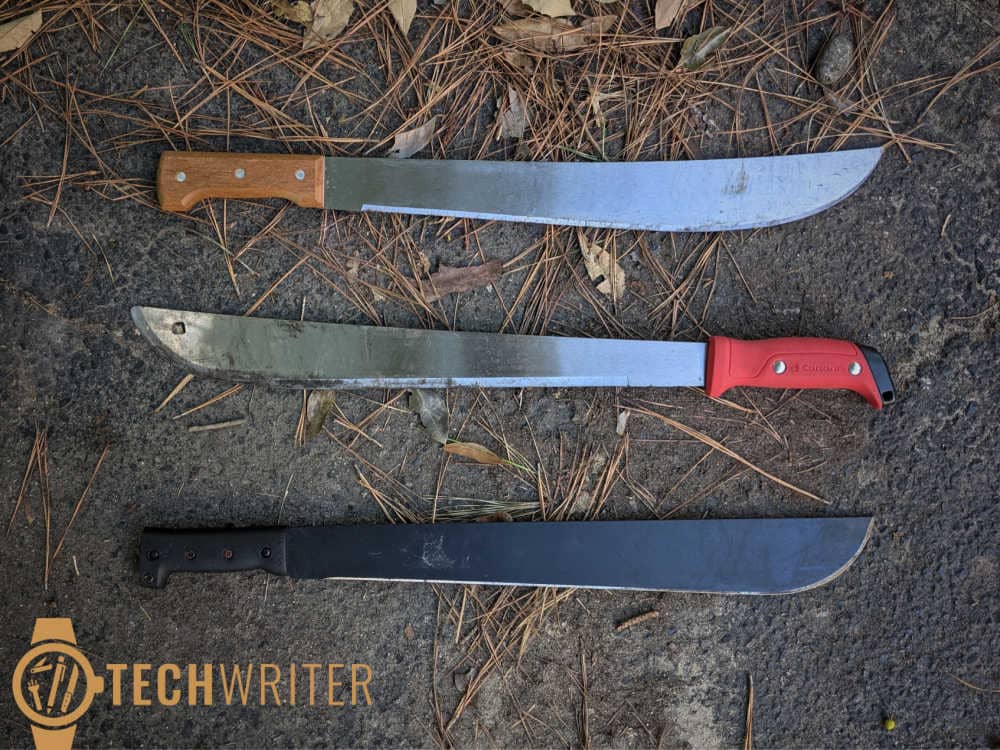
Latin / Bush Machete
The Latin machete, or bush machete, features a long, straight design with a full tang. It is an easy-to-carry and maneuver machete used to clear brush and cut through dense vegetation. The Latin machete is a famous US Military machete. The reason is that the edges are lightweight and powerful while still being comfortable to use.
Arising from Latin America, a Bush machete is a popular all-purpose utility tool for many different tasks, including chopping wood, gardening, and self-defense. However, if you want something more powerful, you might want to consider a Kukri or Panga machete.
Read Our Review of the Corona ErgoHandle Machete Here
Read Our Guide For The Best Machetes For Clearing Brush Here
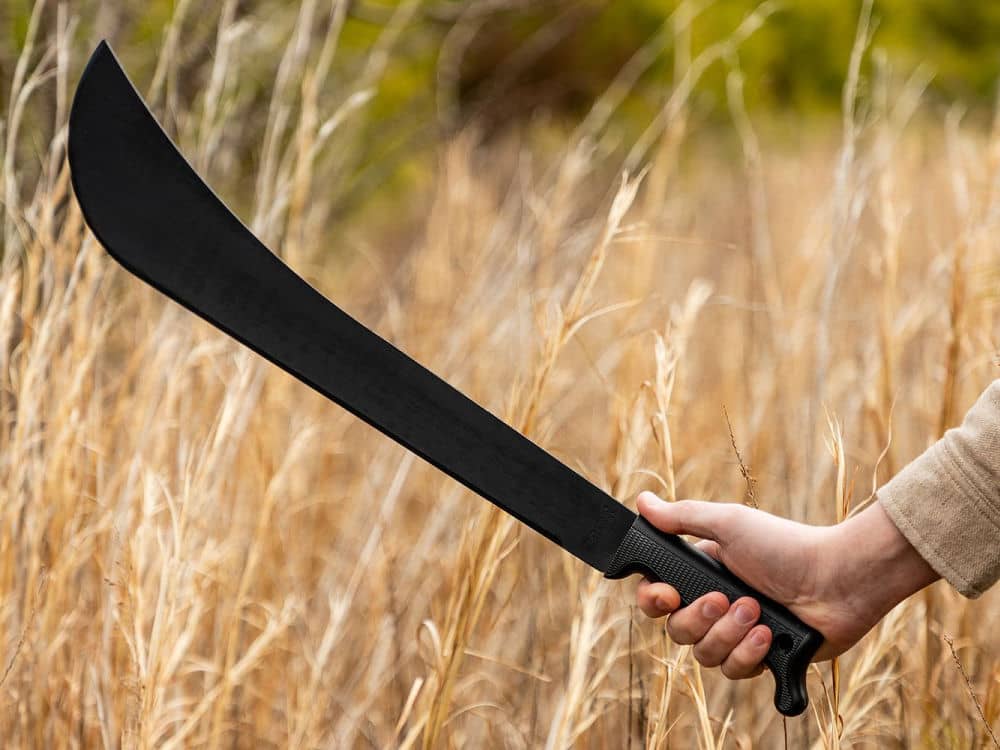
Panga Machete
The Caribbean and Africa are home to the Panga machete, also known as the Rozador or Daga. It has a wide, curved blade that is slightly thinner than the Barong machete. The Panga machete chops down trees and bushes. The blades of Panga machetes are usually between 16 and 24 inches long. The handle is shorter than the blade, making it easy to control. Some people may confuse a Golok with a Panga machete, but they are two different types of machetes. Golok is relatively compact with a shorter blade, while Panga is longer.
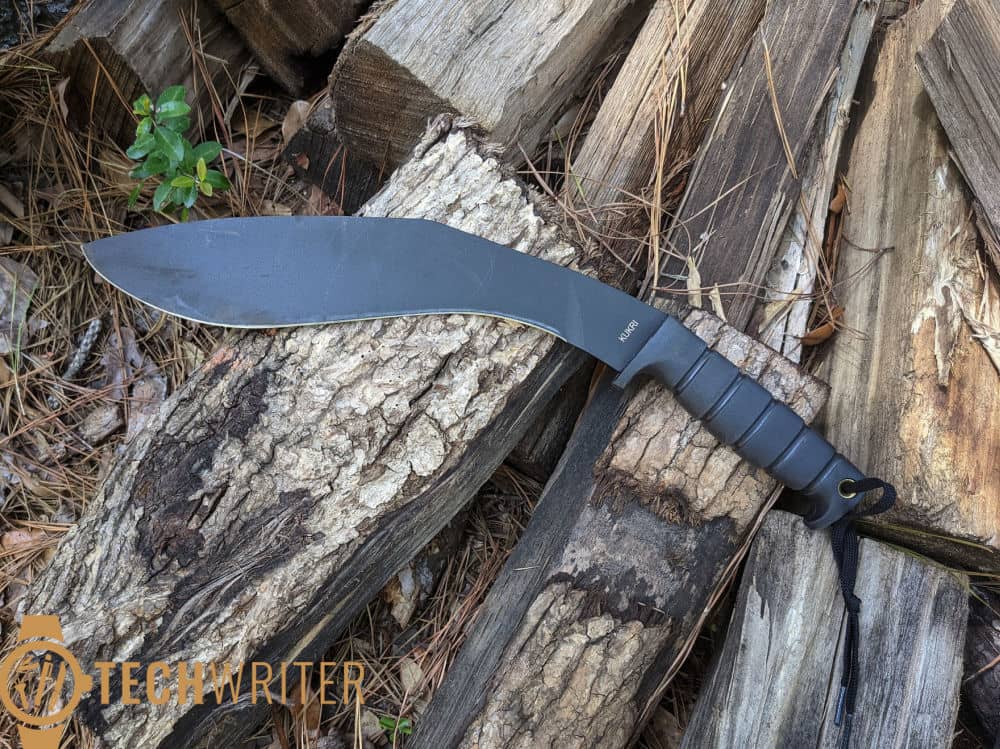
Kukri Machete
Central Asia’s Gurkha community originally used the Kukri machete. It has a distinct, inwardly curved blade thick at the spine and tapers to a sharp point. A kukri is a versatile tool utilized for chopping wood, clearing brush, or skinning animals. It is also an effective weapon in close combat.
The Kukri’s blade curve, thickness, and length are all customizable. The knife’s spine is generally between 5 and 10 millimeters thick at the handle, which tapers to approximately 2 millimeters by the knife’s point. A Kukri has three parts to its blade: the toe or point of the blade, the belly or leading cutting edge, and the spine or back of the blade. Each part is suitable for a different task.
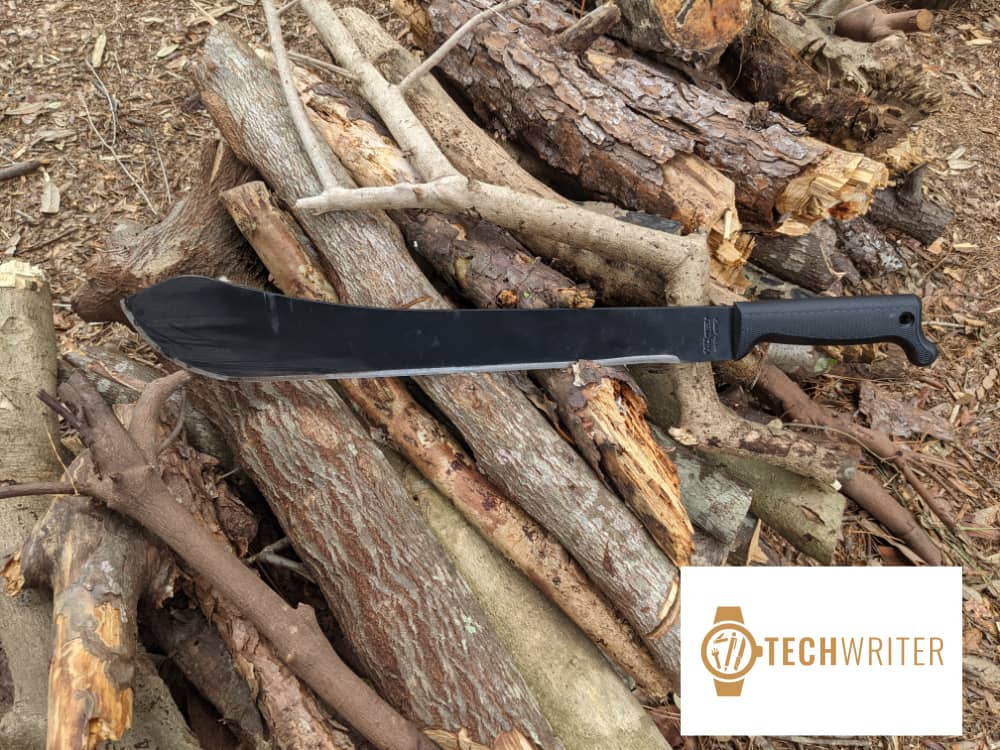
Bolo Machete
A famous war machete used by Filipino soldiers during World War II, the bolo machete is still used today as an agricultural tool. You can use it to harvest crops such as sugarcane, tobacco, and rice. A bolo machete has a convex blade that is relatively thin and tapers to a sharp point. The hilt is crafted using a caribou horn or wood.
Bolo machetes are available in different tips. If the tip is pointed, you can use it for stabbing. If the tip is blunt, gardening and chopping vegetables or meat will be easier. It is a compact and lightweight machete, making it easy to carry and maneuver. A bolo machete is also a common tool in Filipino martial arts, including Kali and Arnis.
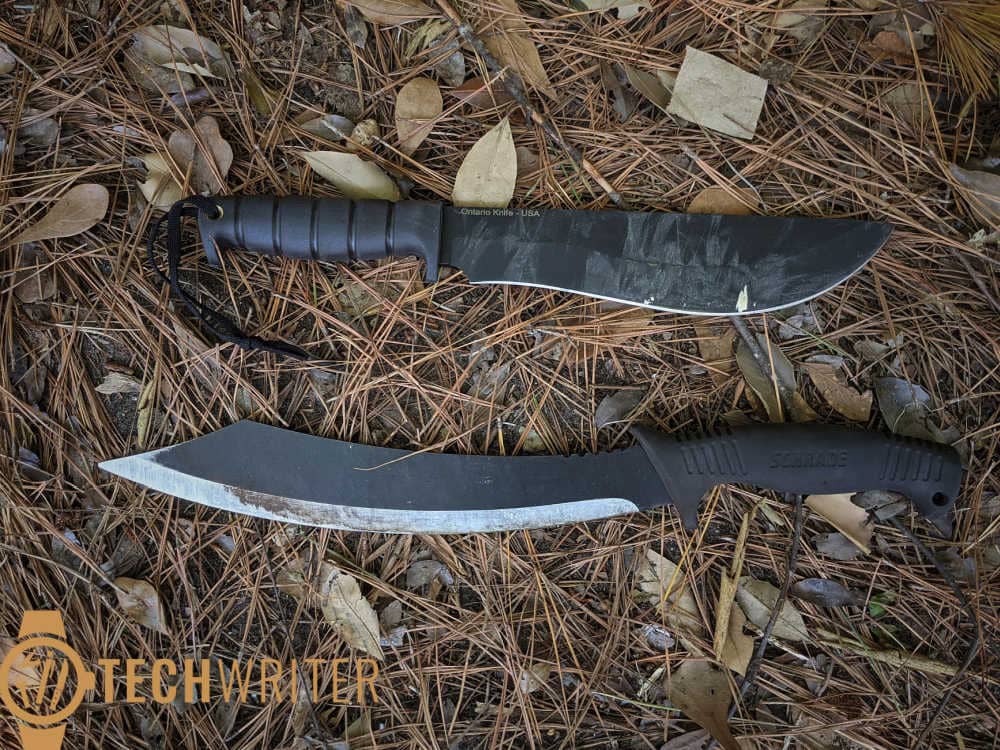
Cutlass Machete
A cutlass machete is a type of sword designed for hacking and slashing. It is similar to a regular machete, but typically has a thicker blade and a more robust handle. The cutlass machete is often used for clearing brush, chopping down trees, and other heavy-duty tasks. It can also be used as a weapon, and was historically used by pirates and soldiers. Today, the cutlass machete remains a popular tool in many parts of the world. It is prized for its versatility and ability to withstand heavy use.
I have found the cutlass style blade to be the most versatile of all of the machetes when it comes to a garden chopper or survival type machete. The Schrade pictured above is an excellent slasher for tall grass and weeds and I use it to clear around the lagoon in my backyard as well as weeding around the landscape. The Ontario above is called a “Bolo” by the company, but it really has a cutlass/pirate sword shape.
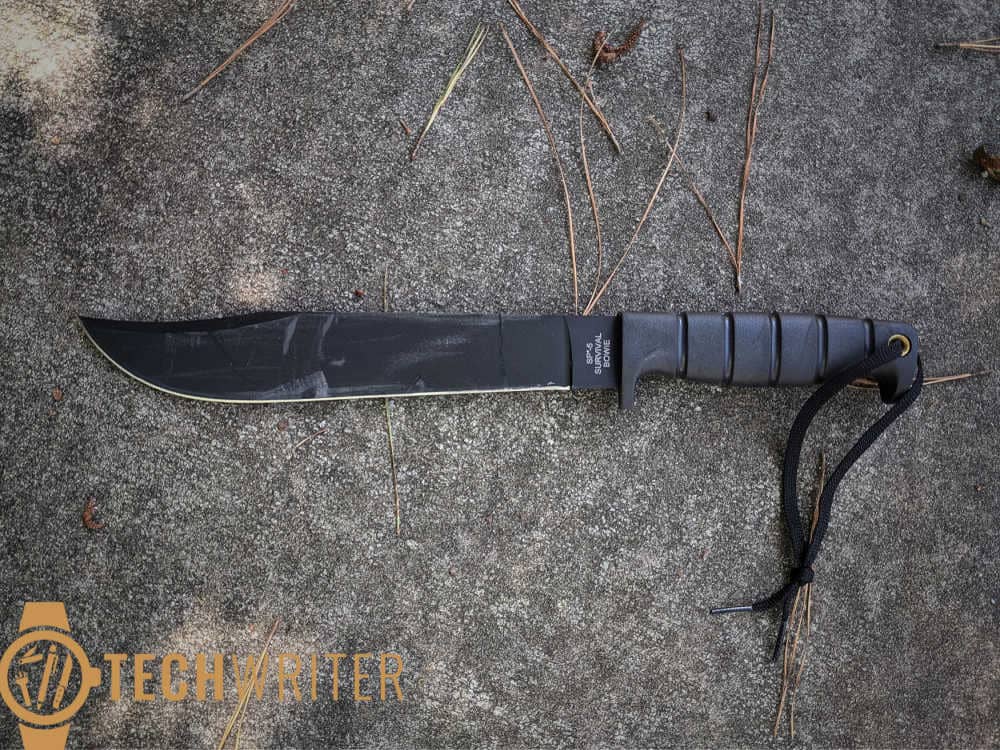
Bowie Machete
A light, powerful, and portable blade for many different purposes, the Bowie machete is a popular choice for many people.
The Bowie machete has a skinner tip for skinning wild game and a clip-point or flesh cutting edge. This type of knife is named after American frontiersman Jim Bowie, who played an essential part in the Texas Revolution.
The blade of a Bowie machete is roughly 12 inches long with a wooden or rubber handle. Bowie machetes are often used for hunting, camping, and self-defense. Since it’s a light-weighted, compact knife, it can be easily carried around and is also a popular choice for many militaries.
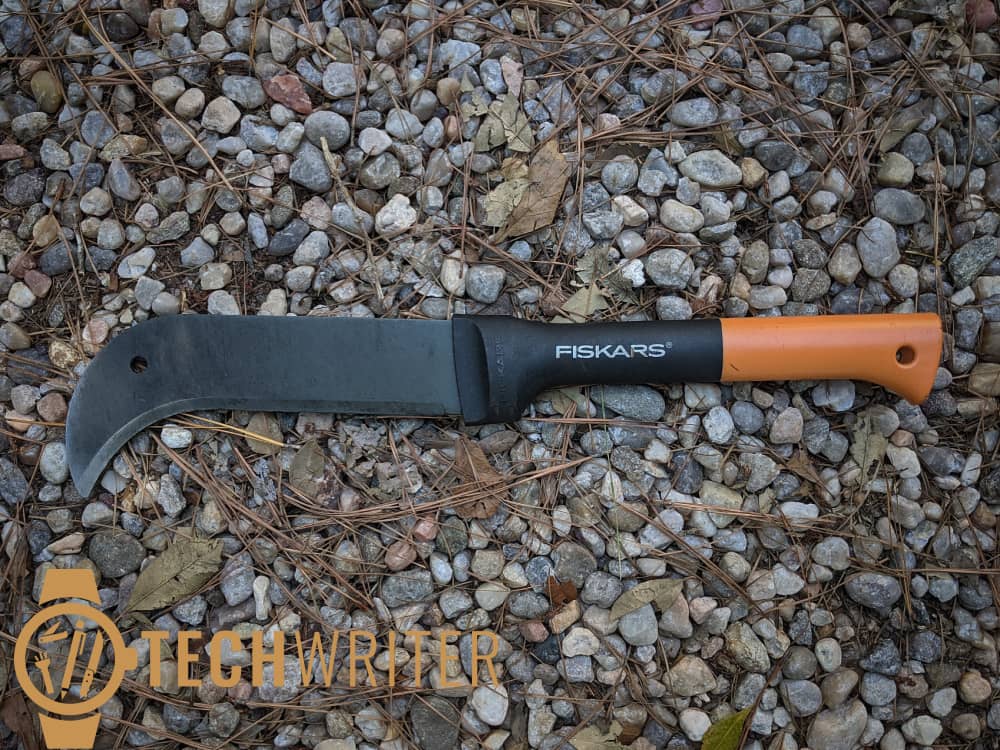
Billhook Machete
A widespread forestry and agricultural tool, the Billhook machete features a curved blade with a sharp point. It is used for cutting through small woody materials, shrubs and branches, grapevines, and brambles. The Billhook machete is also known as a bagging hook or coa. It gets its name from the bird-like hook at the end of its blade. Charcoal makers also use Billhooks for woodlot management and thatchers to harvest reeds. A Billhook machete usually has a blade that is between 12 and 18 inches long. It is a functional tool to use.
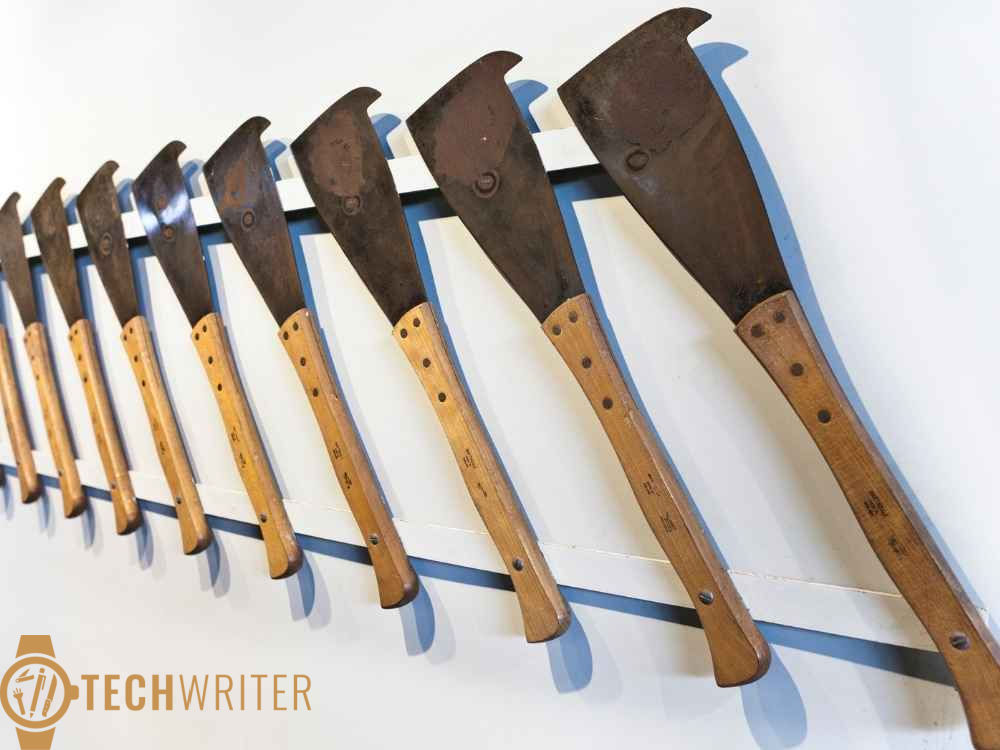
Cane Machete
An ideal machete for hacking corn stalks and cutting sugar cane, the blunt tip is wide and comfortable to use. The users can hook the blade to the ground which allows them to pull the chopped cane while still upright. Although the edge is wide, it is very thin and sharp, enabling users to cut through cane-style vegetation.
The Cane machete is popularly used for cutting rice, corn stalks, sugar cane, and bamboo. The machete’s blunt and wide surface allows users to quickly get through tall crops without additional effort. Cane machete is also called Cleaver, Corn Knife, Machete de Suelo, and Espading.
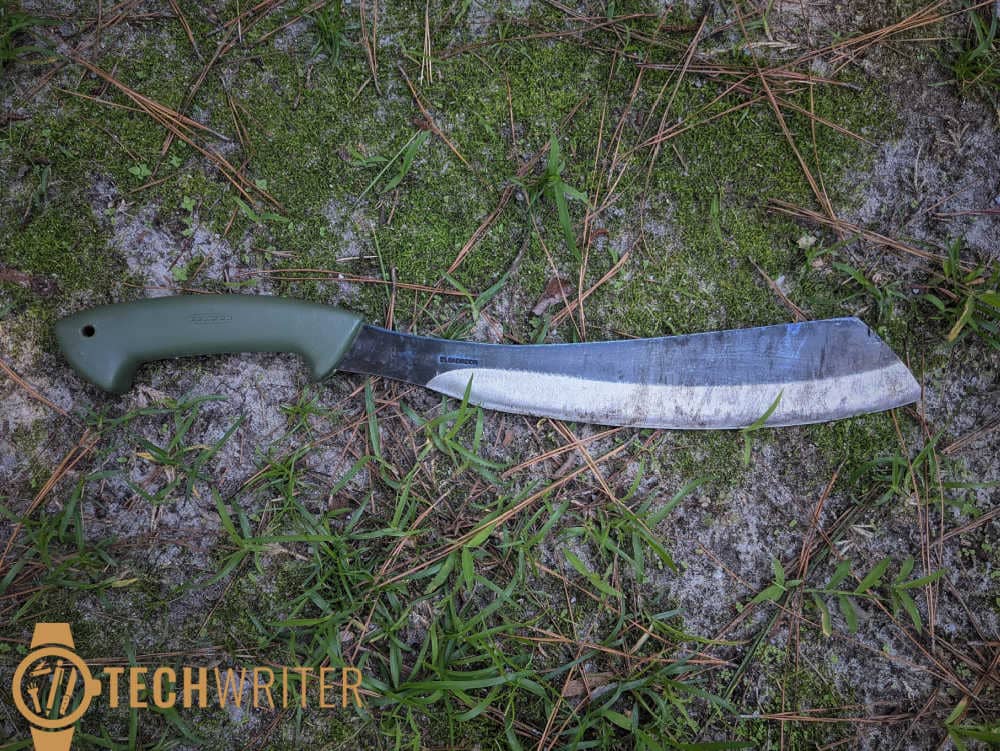
Parang Machete
The Parang machete originated in Indonesia. The blade is ideal for cutting material made of wood or thick crops. The sharp blade does not lodge into the wood or vegetation, making it a breeze for the user to chop through hard surfaces.
The curved shape is distinctive and starts at the spine and goes all the way to the blade’s tip. Shaped like a scimitar, the Parang machete is long, sharp, and comfortable to use. Since its use involves cutting wood, the blade is not lightweight but thick and sturdy. Apart from being called Parang machete, it is also commonly known as Sable and Bedog. Some people will often call a Parang machete a Golok machete, but they are in fact different styles.
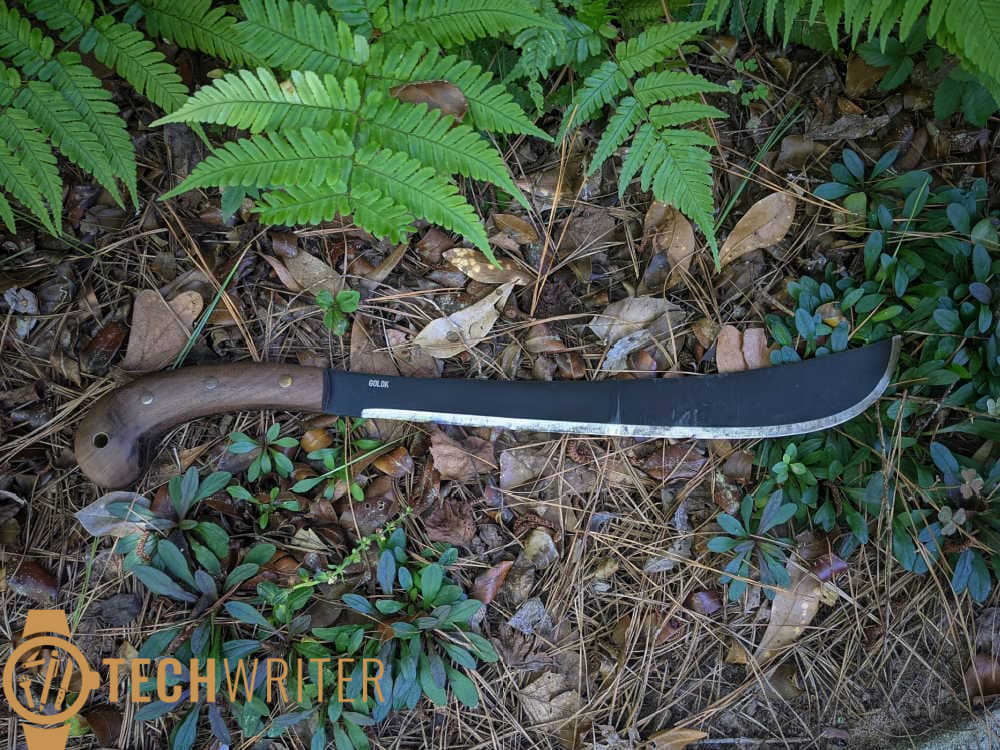
Golok Machete
The golok machete is a type of Indonesian knife that is known for its razor-sharp blade and versatility. The golok is often used as a tool for clearing brush and slicing through coconuts, but it can also be used as a weapon. The golok machete typically has a curved blade that is between 12 and 18 inches long. The handle is usually made from wood or bone, and the whole knife is often wrapped in rattan or other material for added grip. The golok machete is an essential tool for many people in Indonesia, and it has even become popular in other parts of Southeast Asia.
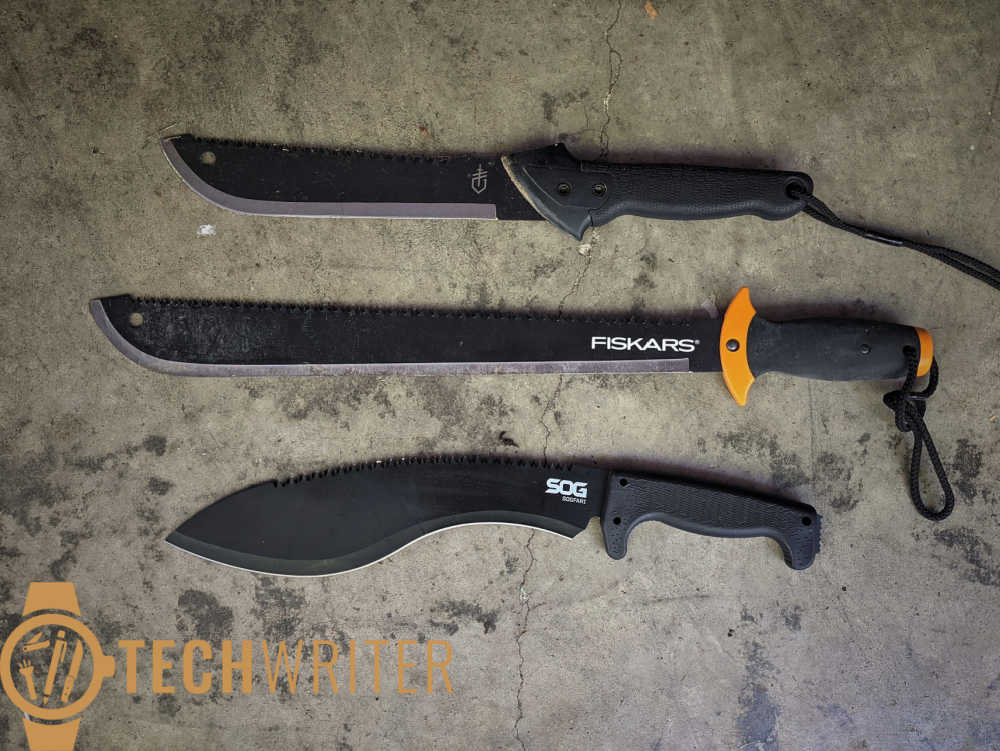
Saw Machete
In my opinion, saw machetes are just a gimmick. Sometime they are also marketed as a survival machete, either way they and semi-useless. I have never come across a combo machete that had a saw blade that actually worked. These are machetes you will find a general store, gas station or a big box retailer. I would skip these and move on, however in a pinch some can come in handy. The Fiskars above has a terrible back saw but a decent blade for cutting small brush, etc.
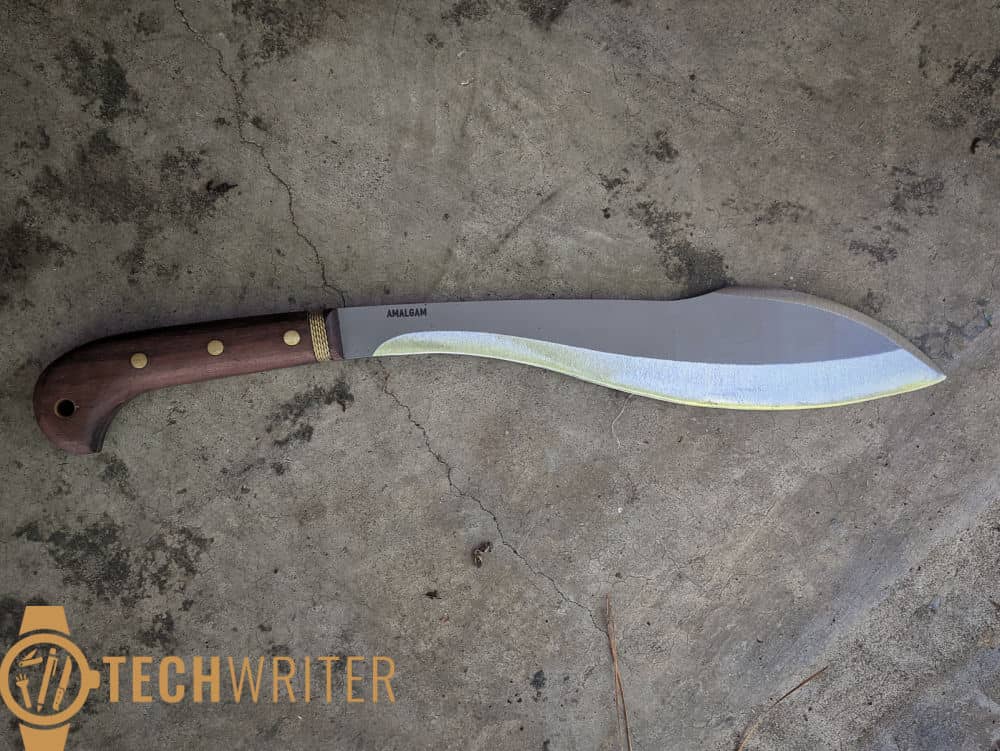
Colima Machete
This machete is designed for clearing a large patch of vegetation in a very short time. Both sides of the Colima machete’s blade are sharp and can be used in a swing motion with both the fore and backstroke. Originated in Central America, the Colima machete has aided many in mowing large swaths of agricultural land.
Colima weighs like a typically weighted machete and is also called Panzon, Acapulqueno, Costeno, and Caguayano. The soft rubber handle enables the user to hold the weight comfortably while the sharp and thin blades clear patches of vegetation.
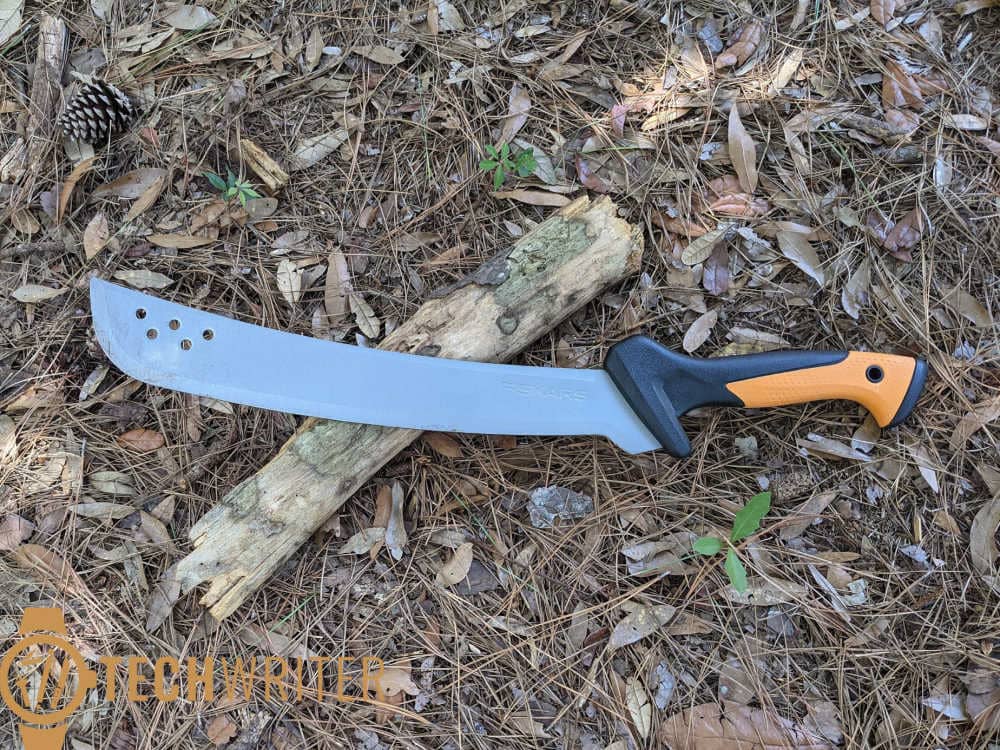
Weighted Machete
The weighted or heavy machete is the heaviest of all machetes available today. As the name suggests, the blade is heaviest at the tip and is used for chopping tough vegetation. If you are looking for something powerful that chops woody vegetation easily, this should be your choice.
This machete is the workhorse of machetes, and its blade length roughly ranges between 22 to 24 inches. A weighted machete is often used for chopping wood because the weight distribution on the blade is great for implying force.
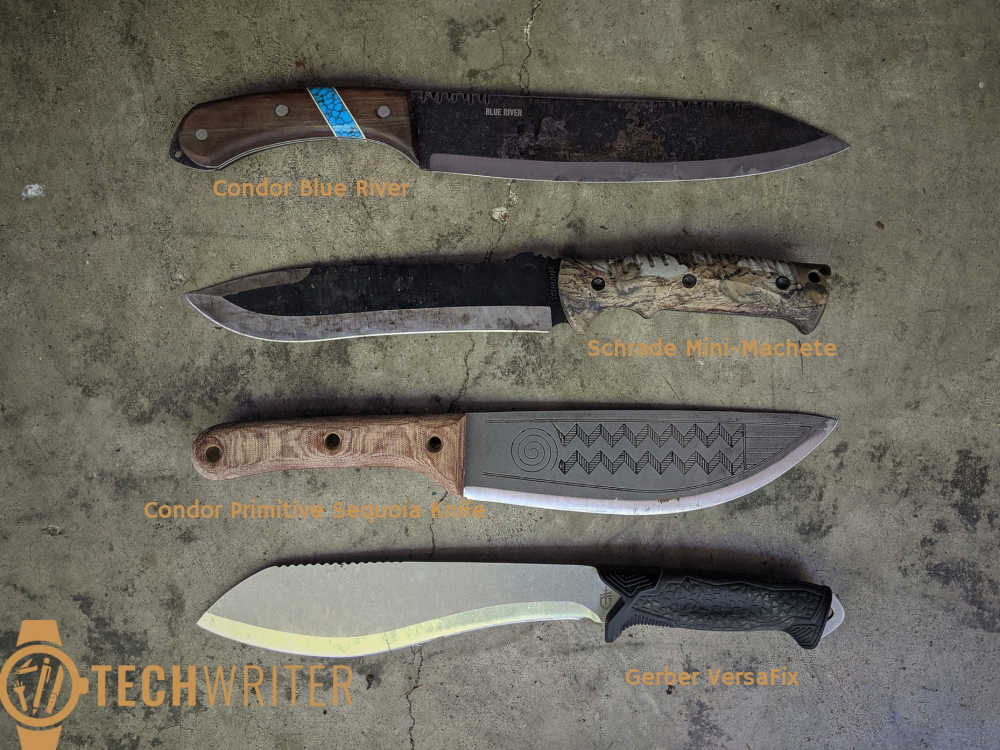
Camping Machete
Camping machetes are smaller machetes or larger thin bladed knives that can both cut, hack and slash. These can also fall into “big choppers” like an ESEE JUNGLAS. A camping machete is easier to carry or strap to a backpack because its blade length is usually only around 12″ to 14″. They can perform double duty as a belt knife and handle finer cutting tasks like food prep and cleaning an animal, but they are large enough to aid in clearing a trail, cutting back brambles and can make a great companion in a survival situation.
History of Machetes
The Stone Age Neanderthal man used large rocks and stones as axes to fell trees and fashion wood for their spears, shelters, and canoes.
The machete as we know it today originated in Spain. It was initially called a “cutlass” (from the French word, coutelas) and was used as a tool for chopping sugar cane.
The word “machete” comes from the Spanish word “macho,” which means sledgehammer. It was first used as a weapon during the Napoleonic Wars.
Interestingly, the machete was brought to the Caribbean and South America by the Spanish, who had conquered these regions. However, they sourced these machetes from Africa.
Features of a Machete
When discussing the features of a machete, it is essential to note that there are many different types of machetes, each with its unique features.
However, in general, a machete will have a long blade between 12 and 24 inches in length. Carbon or stainless steel are popular choices for blade material.
The handle of a machete is usually made from wood, plastic, or metal. Choosing a comfortable grip that will not slip out of your hand when using the machete is essential.
Some machetes also come with a sheath, which is used to protect the blade and make it easier to carry the machete.
What are Machetes Used For?
Machetes prove useful for various purposes depending on the machete type and the geographical location.
Here are some common uses for machetes.
Clearing Brush: A machete is a perfect tool for clearing small trees, saplings, dense underbrush, and thorny vines. The sharp blade easily slices through these plants, and the long handle gives you the leverage to apply more pressure if needed.
Gardening: If you have a large garden, a machete can come in handy for hacking at weeds and overgrown plants. You can also create neat rows for planting seeds or seedlings.
Agriculture: The tropical and subtropical countries rely heavily on agriculture for their economy. Machetes are commonly used in these regions for cutting sugar cane, tobacco, and other crops. You can easily slice through a coconut with a machete or use it to open up a fresh pineapple.
Camping and Hiking: A machete can be a valuable tool when camping or hiking in the woods. You can use it to clear a path, build a shelter, start a fire, or defend yourself from an animal attack.
Fishing: In many parts of the world, people use machetes to clean and gut fish. The sharp blade makes quick work of scales and bones. The industry term for this type of machete is a “bolo.”
Building: Machetes are often used to fashion rough lumber for construction projects. It can help builders to split logs and cut boards to size. It is an essential tool in many parts of the world with no access to power saws.
Hunting: In some cultures, machetes are a valuable tool for hunting. Hunters use it to dispatch game and skin and gut animals. You can even take down small trees and branches to create a makeshift blind or shelter.
Self-Defense: A machete is an inexpensive way to arm yourself and can be very effective as a weapon. The long blade can inflict severe damage, and the element of surprise is often enough to deter an attacker.
Machetes are a necessary tool for anyone who needs to clear brush, chop wood, or skin an animal. With so many different types of machetes available on the market, it is important to choose the one that is best suited for your needs. Consider the size, weight, and blade design when making your decision.
No matter what type of machete you choose, always use it with caution and respect the blade’s power. Exploiting the machete’s potential danger will only result in accidents.

Blair Witkowski is an avid watch nut, loves pocket knives and flashlights, and when he is not trying to be a good dad to his nine kids, you will find him running or posting pics on Instagram. Besides writing articles for Tech Writer EDC he is also the founder of Lowcountry Style & Living. In addition to writing, he is focused on improving his client’s websites for his other passion, Search Engine Optimization. His wife Jennifer and he live in coastal South Carolina.

